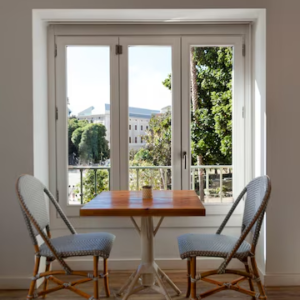Get ready to dive into the mesmerizing world of psychedelic art! In this blog post, we had the opportunity to sit down with a talented artist who has been creating mind-bending pieces that transport viewers into otherworldly realms. From intricate patterns and vibrant colors to surreal landscapes and trippy characters, their work is a feast for the eyes and imagination. We discuss their creative process, sources of inspiration, favorite tools and techniques, as well as some fascinating insights on how psychedelics have influenced their art. Join us on this journey through creativity and consciousness!
Introduction to the Interviewee
Psychedelics have been gaining popularity in recent years as a tool for self-exploration and creativity. I recently had the pleasure of interviewing a psychedelic artist who goes by the name of Blue Star. In this interview, Blue Star shares insights into their creative process and inspiration.
Blue Star is a self-taught artist who began exploring psychedelics about four years ago. Since then, they have used psychedelics to fuel their creativity and explore new perspectives in their art. For Blue Star, psychedelics are not just about getting high; they are also about personal growth and exploration.
In this interview, Blue Star discusses how psychedelics have helped them to overcome creative blocks, find new sources of inspiration, and connect with their subconscious mind. They also share some advice for those who are interested in using psychedelics to enhance their own creativity.
Background on Psychedelic Art and its Significance
Psychedelic art is art that is associated with or inspired by psychedelic experiences and hallucinations. Psychedelic art often features bright colors, exaggerated imagery, and distorted forms. It was first used to describe artwork created during the late 1960s, when artists were experimenting with drugs such as LSD and psilocybin mushrooms. Psychedelic art is sometimes used to achieve a spiritual or therapeutic goal, but it can also be simply for aesthetic purposes.
Psychedelic art has had a significant influence on popular culture. Many well-known musicians, including Jimi Hendrix and The Beatles, have been inspired by psychedelia. Psychedelic art has also been featured in films such as The Trip (1967), Fear and Loathing in Las Vegas (1998), and Enter the Void (2009).
Despite its popularity, psychedelic art is often misunderstood. Some people see it as nothing more than drug-induced hallucinations, while others see it as a way to tap into a higher state of consciousness. Whatever one’s opinion may be, there is no denying that psychedelic art is fascinating and complex.
How does the Artist’s Creative Process Work?
When it comes to creative processes, there is no one-size-fits-all approach. Every artist has their own unique way of channeling their creativity and bringing their art to life. However, there are some commonalities that can be found across many artists’ creative processes.
One of the first steps in the creative process is often brainstorming or coming up with ideas. This can be done through a variety of methods, such as free writing, mind mapping, or simply taking a walk and letting your mind wander. Once you have a list of potential ideas, it’s time to start narrowing them down and choosing which one you want to pursue further.
From there, the artist will start developing their idea into a more concrete concept. This may involve sketching out rough drafts, doing research, or experimenting with different mediums and techniques. The goal at this stage is to start bringing your vision to life and fleshing out all the details.
As you continue working on your project, it’s important to take breaks and step back from time to time. This will help you clear your head and come back with fresh eyes, allowing you to see your work with new perspective. It’s also a good opportunity to get feedback from others who can offer helpful insights and suggestions.
Finally, once all the pieces are in place, it’s time to execute your plan and bring your art into the world. This is where the real magic happens as you watch your hard work come to life.
What Inspires their Artwork?
Psychedelic artists often find inspiration in the beauty of nature, as well as in the spiritual and mystical aspects of life. They may also be inspired by their own personal experiences with psychedelics, which can provide them with a unique perspective on the world. In addition, psychedelic artists may be influenced by popular culture, music, and art from other cultures.
What are some of the Challenges they face in Creating Psychedelic Art?
Psychedelic artists often face the challenge of trying to create art that accurately captures the psychedelic experience. This can be difficult, as the experience is often highly personal and can be hard to put into words or visual form. Additionally, psychedelic art is often associated with illegal drugs, which can make it challenging for artists to find legitimate outlets for their work. Psychedelic artists may also face discrimination from the mainstream art world, which can make it difficult to get their work seen by a wider audience.
How has Psychedelic Art Evolved Over Time?
Psychedelic art has come a long way since its inception in the 1960s. The style was popularized by artists like Peter Max and Stanley Mouse, who used bright colors and patterns to create trippy, otherworldly designs. In the 1970s, the Grateful Dead’s album covers and concert posters helped to spread the psychedelic aesthetic to a wider audience.
Nowadays, there are many different interpretations of psychedelic art. Some artists continue to use traditional techniques like airbrushing and tie-dyeing, while others experiment with digital media or even 3D printing. No matter what medium they use, psychedelic artists all share a passion for creating eye-catching, mind-bending artwork that takes viewers on a journey into another realm. For more information on anime art, visit this Website.
Conclusion
Exploring the creative process and inspiration of psychedelic artists is a fascinating journey. Our interview with this artist was truly eye-opening, full of fascinating insights into how they create their captivating artworks. We hope that you have gained some valuable knowledge from this insight into the world of psychedelic art and are now inspired to explore it further for yourself.





